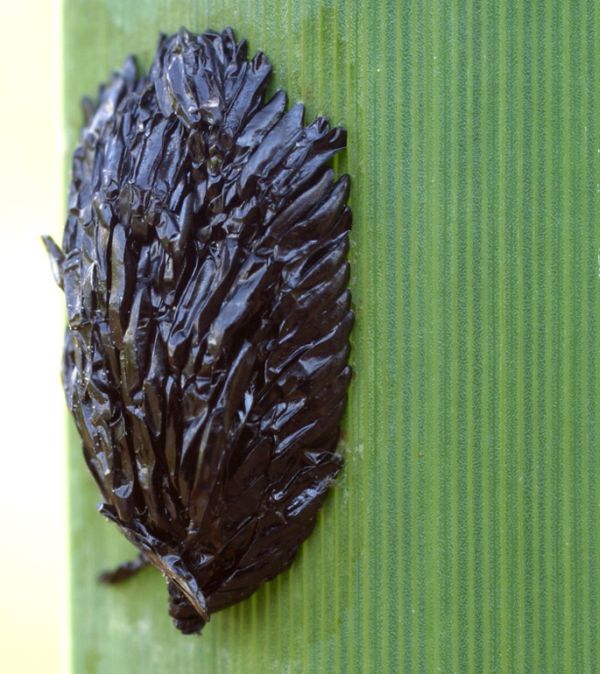Thread subject: Diptera.info :: Tabanidae
#1
Moscow rigion, mid july, on Typha latifolia, small pond.
Is it possible to ID genus? Thank you.

#2
Hi Nikita,
how did you know these are tabanidae eggs? Did you see a female tabanid laying them? Cheers, Louis
#3
No, I havn't seen the female. But once I've seen the foto of Tabanus sp. eggs by entomologist I can trust and it looked just like this one. Also in literature I rad that Tabanidae put black eggs on the leaf over the water surface. Than, the size of all eggs is so large that only large and well feed (like good consomation of our blood) Diptera may put it (of course, if Diptera at all). Am I wrong?
#4
I'm back to old thread.
Same pond, with a lot of Hybomitra bimaculata(?).
May be Theo overlook this thread last year?
Or the question is not obvios and I should try to find more and observ or rear?
Nikita
Posted by
crex on 25-06-2006 07:57
#5
About the eggs ... check out
this russian page. I don't read russian, but the first picture looks very much like Nikita's.
#6
You've found it Crex!
Last year I ID eggs on my photo as Tabanidae exactly because of this photo. Now I regard the problem as not as easy.
1. Russian description under this photo is "eggs of Slepen'". Russian words Slepen' means both Hybomytra and Tabanus genuses.
2. Sait and photo belongs to our member Victor Shilenkov, he is good entomologist and expert in Carabidae, but not expert in Diptera.
So we badly need Theo's oppinion!
#7
I found some information in ?British Soldierflies??
1. Tabanidae eggs wtite or white-yellow freshly lay, than become dark to deep black.
2. Chrysops put eggs in one layer, 15-20 degree to substrate.
Both fact are visible on my photo:
http://www.diptera.info/forum/viewthread.php?forum_id=5&thread_id=1767&pid=7220#post_7220
3. Hybomytra and Tabanus eggs lay in 3-4 layers, angle to substrate 45-50. Looks like ?inverted fan? (I don?t know what is it).
So, I think Hybomytra-Tabanus is correct.
Posted by
Zeegers on 31-07-2006 10:53
#8
so, you don't need me.
You figured it out.
The adult looks like Hybomitra bimaculata
On Typha near a pond, that is likely to be a Hybomitra species.
Theo
#9
Oh now I remember seeing such eggs on Carex near water in early July, but somehow I didn't take any pictures...
#10
Thank you for confirmation Theo.
This year I wake up two times early morning to take photo of emerging of larvae. Unfortunely, so far they prefer to born in my absence...

